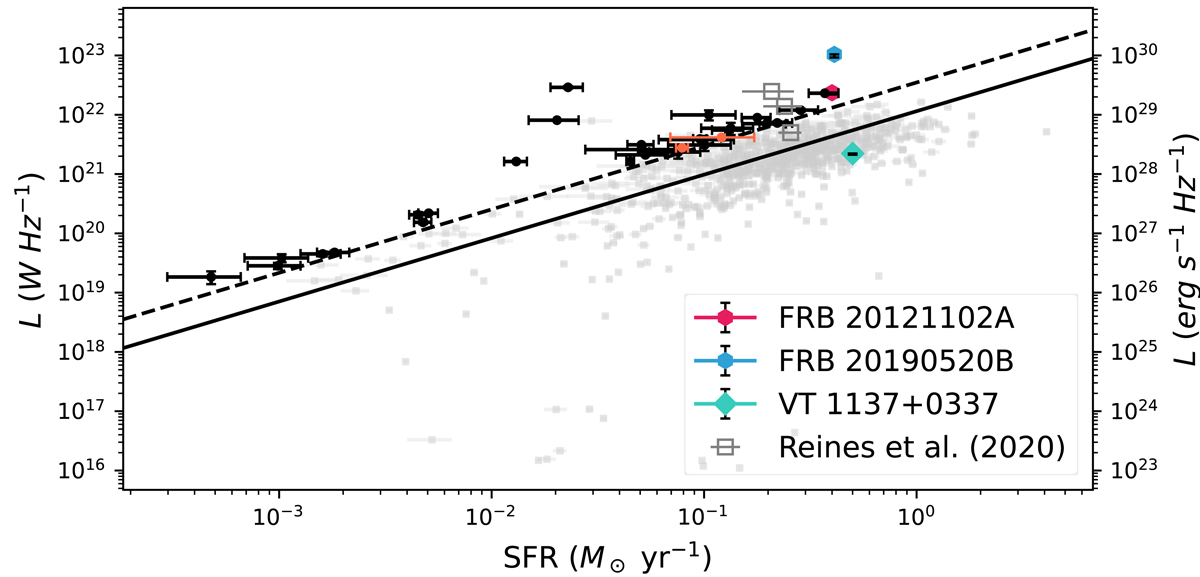Fig. 2.

Download original image
Candidate selection via the L–SFR relation. Gray-filled markers indicate compact radio sources matched to dwarf galaxies matched. Black filled circles correspond to our final selection of OCRs matched to a dwarf galaxy with luminosity exceeding 3σ (dashed line) on the L–SFR relation by Gürkan et al. (2018, and the solid line) shows those with validated redshift. The uncertainty on luminosity is below the marker size. Orange markers are sources within the AGN region in Fig. 1. As a reference, we show PRS luminosity and the SFR of the host for both FRB 20121102A (Tendulkar et al. 2021; Law et al. 2022) and FRB 20190520B (Niu et al. 2022), with luminosity measurements scaled to 144 MHz using α from Resmi et al. (2021, evaluated between 2 MHz and 10 GHz,) and from Niu et al. (2022, evaluated between 1.5 and 5.5 GHz), respectively. We also show the transient source VT 1137+0337 using values from Dong & Hallinan (2023). Finally, we show Reines et al. (2020) galaxies (J0909+5655, J1136+2643, J1220+3020) matched in CLU for which SFR information is available, with luminosity scaled to 144 MHz using α values fitted between 1.4 GHz and 9 GHz by Eftekhari et al. (2020). The large scatter in luminosity is discussed in Sect. 2.3 and Appendix A.
Current usage metrics show cumulative count of Article Views (full-text article views including HTML views, PDF and ePub downloads, according to the available data) and Abstracts Views on Vision4Press platform.
Data correspond to usage on the plateform after 2015. The current usage metrics is available 48-96 hours after online publication and is updated daily on week days.
Initial download of the metrics may take a while.


